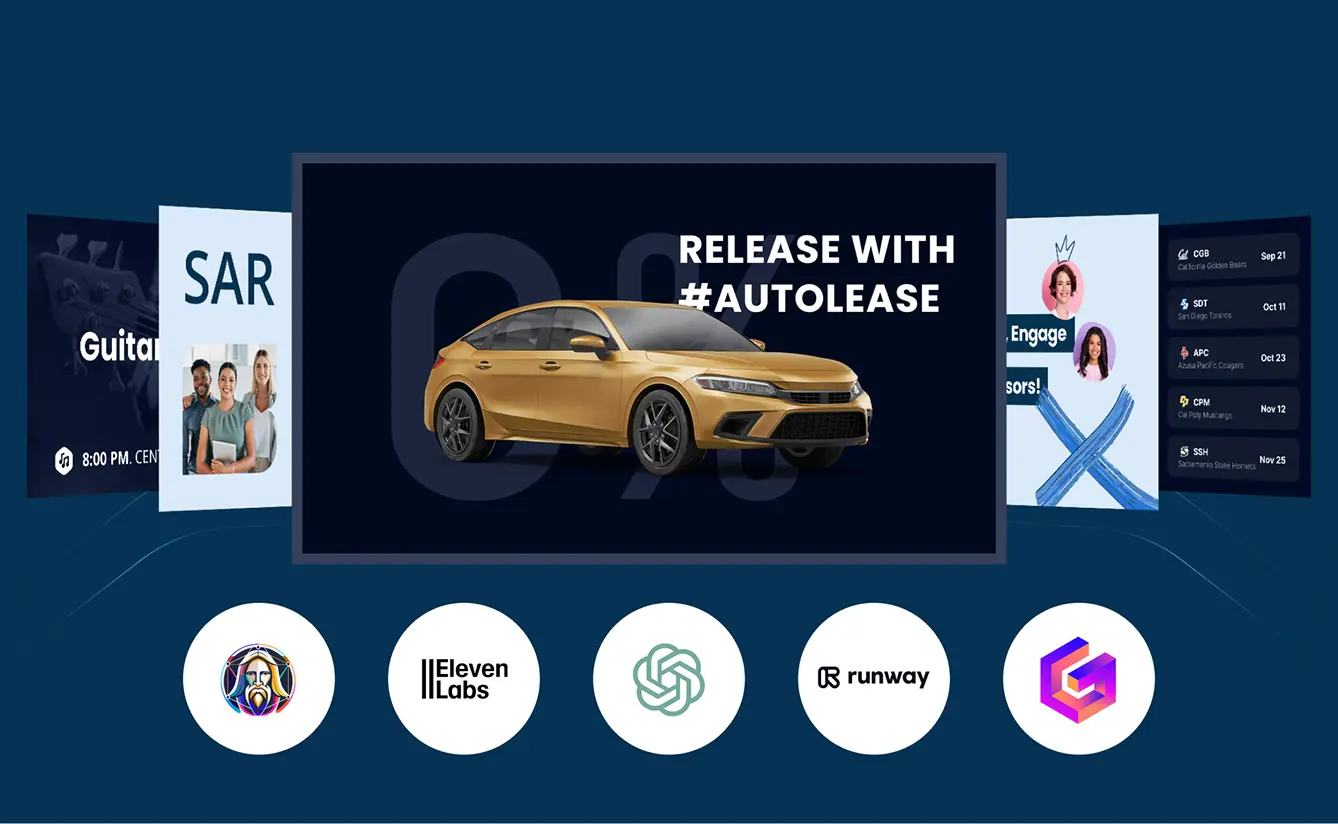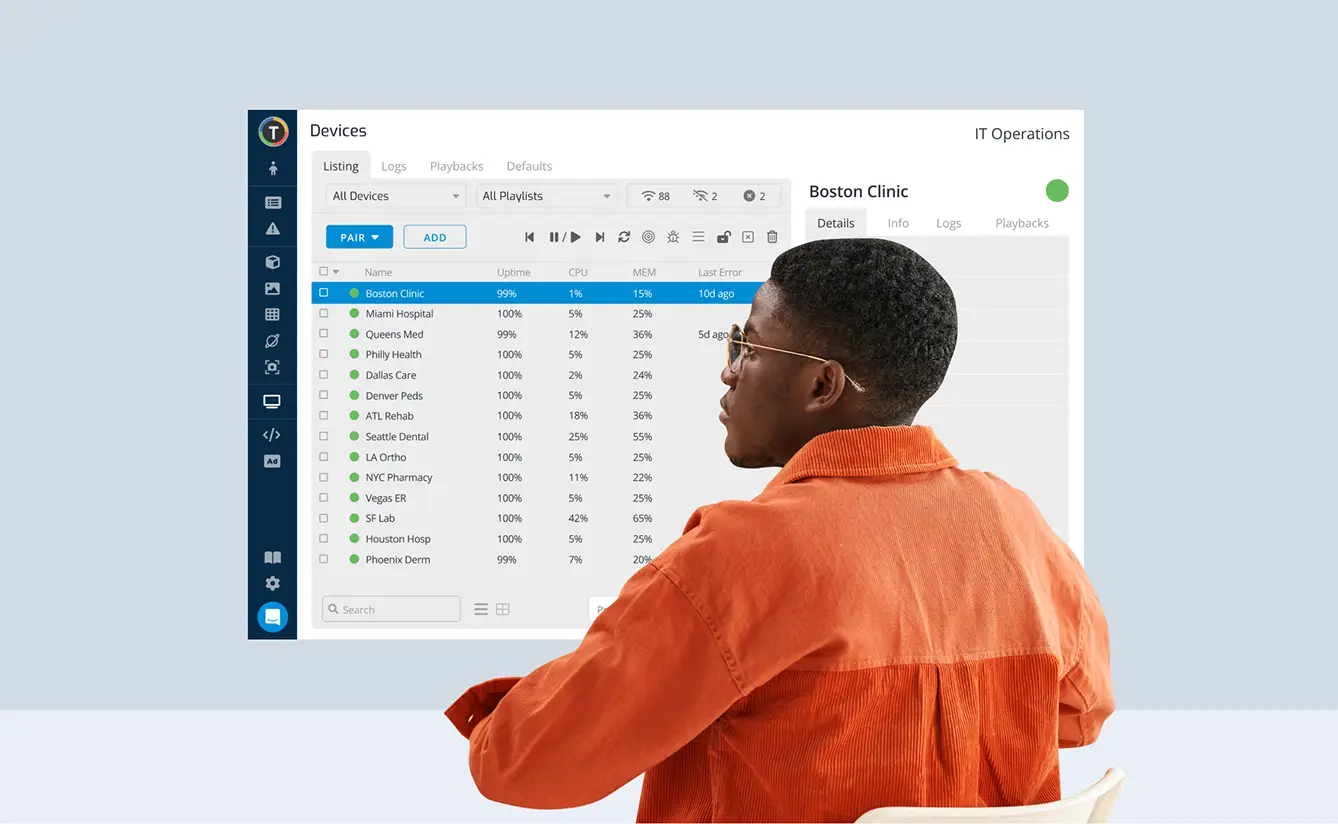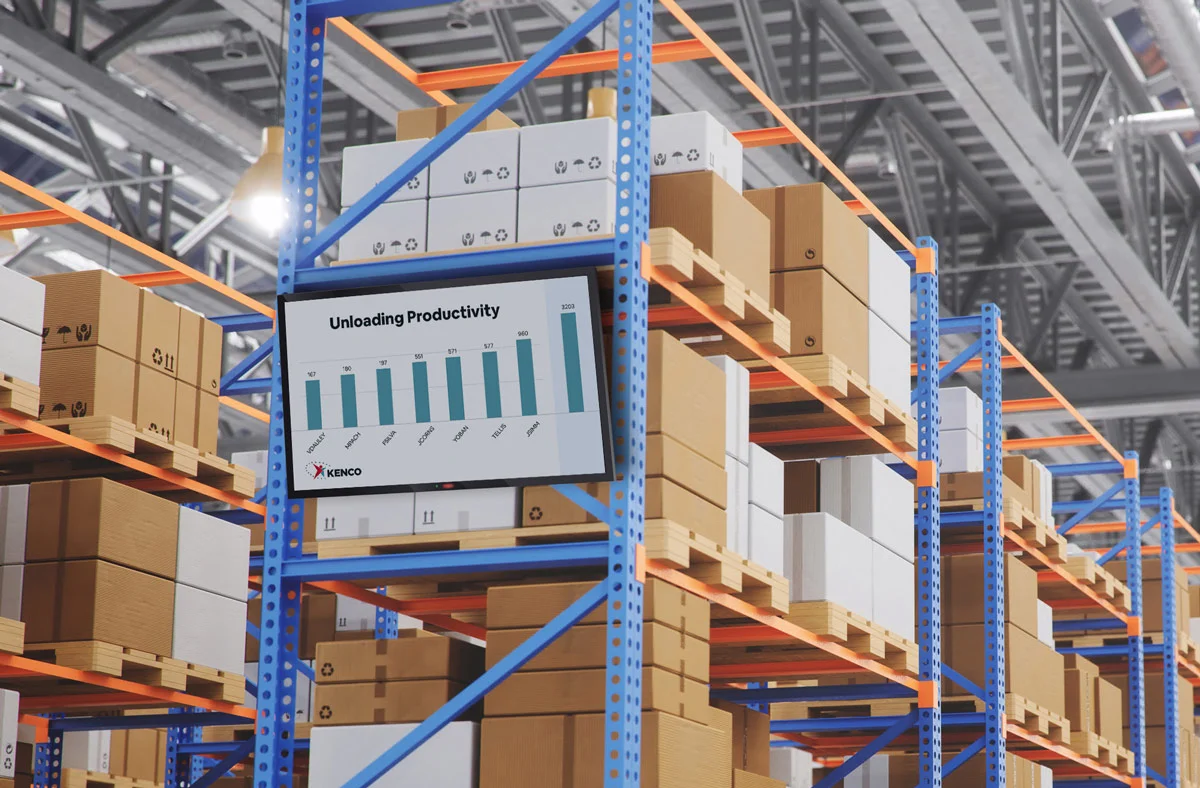AI Innovations Driving Digital Signage
WRITTEN BY: TelemetryTV, 03-24-2025

Digital signage used to mean looping slideshows on lobby screens. Today, artificial intelligence is powering a new era of data-driven, adaptive displays across a variety of settings, from corporate offices to retail stores and hospitals. Modern cloud-based digital signage software solutions integrate AI for dynamic content creation, real-time analytics, and predictive maintenance, delivering tailored messages and proactive monitoring on a scale previously unattainable. Below, we explore how AI impacts five key areas: content generation, application development, edge analytics, device management, and broader innovations in signage.
AI in Content Creation

Crafting fresh, engaging content has long been a challenge for organizations deploying digital signage. Artificial intelligence is changing that, enabling businesses to produce high-quality visuals, videos, and textual content far more efficiently than in the past. By leveraging generative AI tools, both small companies and large enterprises can keep their displays compelling and up to date.
Generative Visuals
Modern AI image-generation tools allow users to describe a concept ('skyline at dusk with neon lights,' for example) and receive polished artwork in seconds. Leonardo AI, featured on our blog, produces custom visuals from simple prompts, often in high resolution and suitable for immediate use in cloud-based digital signage software solutions.
AI image-generation software can quickly produce graphics, helping content managers keep digital signage visually fresh.
Rapid Video Production
Similarly, AI-driven video platforms like Runway ML enable marketers to create short clips without costly shoots. By describing the desired visuals or uploading a reference photo, users can generate videos for promotional campaigns and schedule them directly in TelemetryTV's digital signage software. This rapid production cycle helps businesses keep pace with evolving marketing and communications goals.
Automated Copywriting
Generative language models, such as ChatGPT or Copy.ai, now draft text tailored to specific audiences and tones. Marketers might request a concise welcome message for a lobby screen or a witty tagline for a retail promotion, and the AI provides multiple variations in seconds. Once approved, the text can be published on displays through TelemetryTV, ensuring signage is consistently updated.
AI-Assisted Application Development

Today's digital signage software does more than schedule images. TelemetryTV, a cloud-based digital signage system, supports a Git-based web app framework for building custom applications, ranging from interactive kiosks to real-time dashboards. AI amplifies this approach in two ways:
Accelerated Coding
AI-powered coding assistants, such as GitHub Copilot, reduce repetitive tasks by generating code snippets based on developer descriptions. This streamlined workflow helps smaller teams create sophisticated signage apps more quickly.
Smarter App Features
Because TelemetryTV's framework uses standard web technologies, developers can integrate AI services directly into signage apps. An AI chatbot might answer customer questions at a retail kiosk, or a vision system could gauge foot traffic, adjusting on-screen messages in real time.
The result is a DevOps-like pipeline for digital signage software: push updates to Git, and let the system handle deployment. AI then adds automated coding support and intelligent features, allowing for agile, customized experiences on any display.
Edge AI and On-Device Analytics
Not all AI runs in the cloud. Edge AI executes machine learning models on local hardware, such as a digital signage media player. This setup minimizes latency, enables offline capabilities, and prevents sensitive data from leaving the device. TelemetryTV's digital signage software solutions can operate effectively in hybrid modes, orchestrating both cloud and edge intelligence.
Real-Time Responsiveness
Displays in places with limited connectivity or high traffic require immediate reactions. For example, if a camera detects a large gathering in front of a screen, the local AI can switch to emergency messaging or queue management content, even without internet access.
Offline Reliability
By caching content and running models locally, edge AI keeps signage functional during outages. In settings like subways or remote facilities, screens continue to update or show relevant information based on sensor inputs, without depending on the cloud.
Privacy and Bandwidth Savings
Edge processing allows analytics (for instance, counting passersby) without uploading video streams for remote analysis. Only aggregated insights are sent back, reducing bandwidth usage and ensuring compliance with data protection regulations.
Edge AI can enable real-time audience analytics without sending full video data to the cloud.
AI-Driven Device Management

Managing a network of hundreds or thousands of digital signs can be overwhelming. AI reduces this burden by predicting issues and optimizing maintenance schedules.
Anomaly Detection
Modern media players provide extensive telemetry. AI models can learn each device's normal performance, flagging irregularities like sudden temperature spikes or unexpected reboots. TelemetryTV already sends real-time alerts; AI makes them even more proactive.
Predictive Maintenance
By analyzing usage patterns, AI systems can forecast hardware failures. If a cooling fan shows early signs of trouble, support teams can schedule repairs before disruptions occur. In large deployments, these incremental predictions translate into significant cost savings.
Energy Optimization and Security
AI-powered solutions may reduce brightness or power off select screens when foot traffic is minimal, cutting energy costs. They can also detect suspicious network activity, locking down compromised devices and safeguarding digital signage networks from hacking attempts.
Other AI Applications in Digital Signage Software
Beyond core functions, AI is shaping new possibilities in targeting, localization, and scheduling. Audience analytics can personalize content for demographics or even measure sentiment based on facial cues. Translation engines now dynamically convert signage into multiple languages. Automated scheduling algorithms learn which content performs best at specific times or locations, continuously refining their approach for improved results. Voice and gesture recognition further reduce the need for direct touch interaction, offering contactless ways to browse menus or ask questions.
Conclusion and Next Steps
AI has elevated digital signage into a platform for instant adaptation, predictive maintenance, and data-rich personalization. From generative media tools to on-device analytics, these technologies enable organizations to communicate more effectively while reducing manual overhead. TelemetryTV's cloud-based digital signage software showcase how a robust framework can merge creativity, real-time insight, and operational efficiency under one roof. As AI advances, screens everywhere will grow more responsive and intelligent, bridging physical and digital realms in ways that continue to transform modern communications.
Explore AI-Driven Signage
Leverage TelemetryTV's cloud-based digital signage software to incorporate enhanced content and device management for streamlined deployments and more meaningful viewer engagement.
Start for Free










